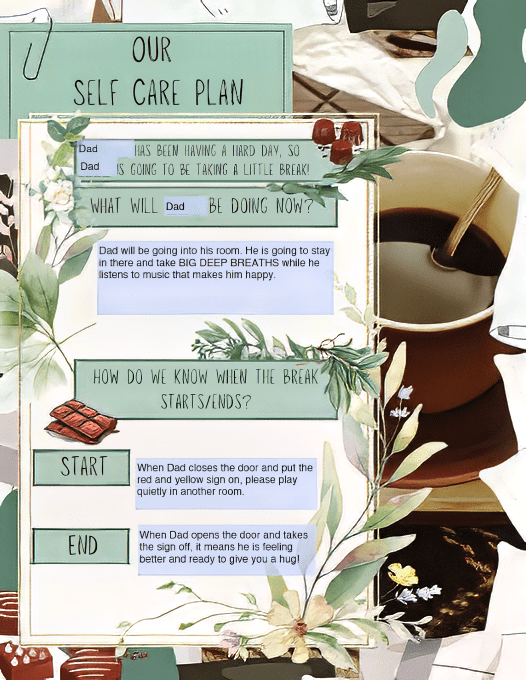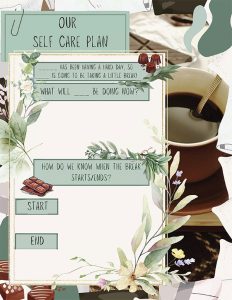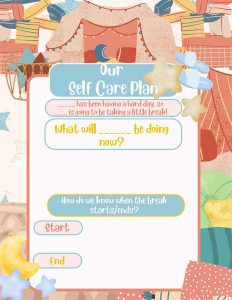Being part of a first responder family is something truly special. The experience can be filled with pride, purpose, and strength. When a member of your family chooses to serve the community, your whole family takes on the duty. Whether it’s celebrating promotions and milestones, showing up proudly at community events, or adjusting to unpredictable schedules and shift changes, your resilience as a family matters deeply. Even in the quiet moments of worry when they head out the door, your strength does not go unnoticed. We see you.
We also know that behind the pride and purpose, there can be challenges: long hours, missed holidays, emotional fatigue, and the invisible toll that stress can take on the entire household. As families of first responders ourselves, we get it. That’s why UCF RESTORES, which includes the 2nd Alarm Project at UCF RESTORES, has developed resources specifically for first responder families. Click on the links below to find resources developed by first responder partners and caregivers for first responder partners and caregivers.
Stronger Together Slides
This workshop was developed for departments wanting to include spouses/partners into the orientation of new hires but not necessarily having the resources to do it. This series was developed by UCF RESTORES staff, the majority of whom are married to first responders. The workshop includes several topics:
- Insights and challenges of the first responder community
- The signs and impact of stress and trauma on your family
- Best practices for supporting first responders
- Communication and coping strategies to build a resilient relationship
- Self-care practices
- Resources available to first responder families
If you would like copies of these slides, have any questions, or would like to arrange for UCF RESTORES personnel to provide this workshop, please contact Suzie Nazarro (REACTPeerSupport@ucf.edu) for more information.
Stronger Together Videos
Initially conceptualized as a workshop for spouses/partners of new recruits, we know that some agencies, such as volunteer fire departments, may not have the resources to stand up this workshop on their own. This video series contains the same content as is included in the workshop but in a format that allows for spouses/caregivers to view the content on their own schedule. It includes the same topics:
- Insights and challenges of the first responder community
- The signs and impact of stress and trauma on your family
- Best practices for supporting first responders
- Communication and coping strategies to build a resilient relationship
- Self-care practices
- Resources available to first responder families
The videos are available for viewing at no charge.








Parenting Through Traumatic Stress
Traumatic stress can be described as the anguish that comes from experiencing an event that involves exposure to a loss of life, a threat to life, or sexual abuse. Unfortunately, trauma exposure can be a large component of being a first responder. While some calls may become routine over time, the first exposure to a specific event, more severe events, repeated exposures to the same event, or events that blur the line between work life and personal life can lead to traumatic stress.
Traumatic stress can result in various regrettable behaviors and are reported (retrospectively) by first responders as overreactions to actions by their child that the first responder perceives (in the moment) as potentially dangerous. Examples of such situations reported by first responders include potentially injurious behaviors such as:
- being too close to a body of water
- getting too close to hitting their head
- getting too close to sharp objects
Traumatic stress can also result in overreactions to minor situations such as:
- accidental spills of a beverage by a family member
- developmentally appropriate arguments between siblings
- child overreactions or “meltdowns”
To prevent these overreactions from happening, please see the self-care strategies below for ways to manage your own emotions BEFORE you put on your parent hat. If you realize that you were too harsh on your child because of your own traumatic stress, you can use the AAA Plan – Acknowledge, Apologize, Atone.
Step 1. Acknowledge
Acknowledge the situation in its entirety. Focus on what YOU did. Do not use this time to justify your actions; rather focus on taking ownership.
Example: When you got near the pool, I got really scared that you might get hurt. I yelled at you, and I think I scared you.
Step 2. Apologize
Apologize for your negative actions.
Example: I am really sorry that I yelled at you; it is not okay that I did that.
Step 3. Atone
Atone for your negative reaction. To atone means to make amends or reparations. This means that you take active steps to change your behavior. You might spend a little one-on-onetime with your child – doing something positive and special. Atone also means making changes within yourself to prevent these overreactions from happening again. If you don’t change your own behavior, your child will come to believe that your apologies do not have substance.
Here are the potential steps you can take to change your behavior:
- Scroll down to the tactical breathing strategies listed below and use one to get a better handle on your emotional and physiological reactions.
- Make sure you have a self-care plan in place. If you don’t, use our self-care toolkit below to develop one for yourself. Make it a family night affair and have everyone develop their own plan. If you already have a plan, make a point to use it regularly.
If “taking care of it yourself” does not seem to be working:
- Reach out to your department’s Peer Support Team for help. If your department does not have a peer support team, reach out to Redline Rescue, Blueline Rescue, or Goldline Rescue to find a trained peer support specialist.
- Contact a first responder trauma-trained clinician.
- If your agency has a clinician, contact them
- Find a clinician on Redline Rescue, Blueline Rescue, or Goldline Rescue.
- Contact UCF RESTORES’s single-session consultation line (407-823-1657) for a 50 minute session where you will develop an action-oriented stress management plan tailored to your unique needs.
We all make mistakes and do things we regret, especially in the aftermath of a traumatic experience. While these situations can lead to feelings of guilt and shame, it is important not to withdraw. Instead, allow yourself to be vulnerable and seek out the help of others.
Self-Care Toolkit
No one can be “on” 24/7. At the end of the day, it is likely that first responders and their families are going to have incredibly hard days. One cannot merely “grin and bear it” through a pediatric fatality, or smile and wave when being scrutinized in the court of public opinion. Similarly, being the non-first responder caregiver in a first responder household has its own challenges. Your responsibility is to fill the gaps when duty calls. Taking intentional small breaks throughout the day to practice self-care is often far more beneficial than waiting to release stress all at once at the end of a long shift or day. In reality, even just two minutes to pause, breathe, and ground yourself in the present moment can make a meaningful difference in how you manage the rest of your day. It’s not about stepping away for hours; it’s about recognizing when your internal pressure is building and releasing a little of it before it becomes overwhelming.
On those days when you need more than a few minutes, take the time for self-care. We recommend creating a self-care plan in advance and communicating it to the rest of the family. A self-care plan does not have to be complex. Here is an example of a simple self-care plan. In the plan below, the red and yellow sign is a simple door hangar that says “Do Not Disturb.”

Below are links to a variety of self-care templates that you can download and use.
Need Self-Care Ideas?
See a list of potential ideas here:
Tactical Breathing for Self-Management
Deep breathing is a tool that can be used anywhere and anytime. Taking slow and controlled breaths signals to your brain that you are safe and can allow you to relax. Below we present three different strategies. Each has a link that demonstrates how to do each deep breathing exercise. Choose the one that works best for you.
Breathing Techniques that Work:
- Tactical Breathing (Box Breathing)
- Remember 4-4-4-4 – Breathe in for 4 seconds, hold for 4 seconds breathe out for 4 seconds, hold for 4 seconds, repeat
- Cyclic Sighing
- Directions: Breath in through your nose and fill your lungs. Then take a second inhale, focusing on expanding your lungs as much as possible. Then exhale through your mouth in a slow and controlled way. For more information, see the Stanford Medical article.
- The 4-7-8 Technique
- 4 – Inhale for a count of 4
- 7 – Hold your breath for a count of 7
- 8 – Exhale through your mouth for a count of 8






